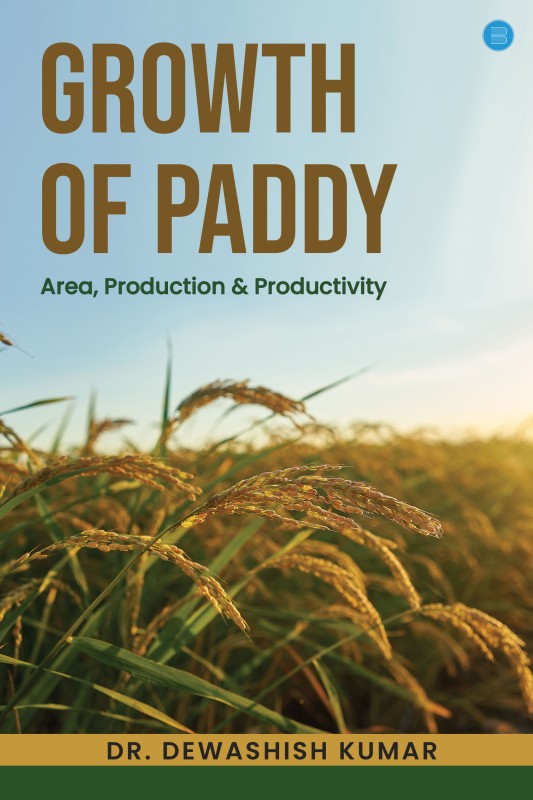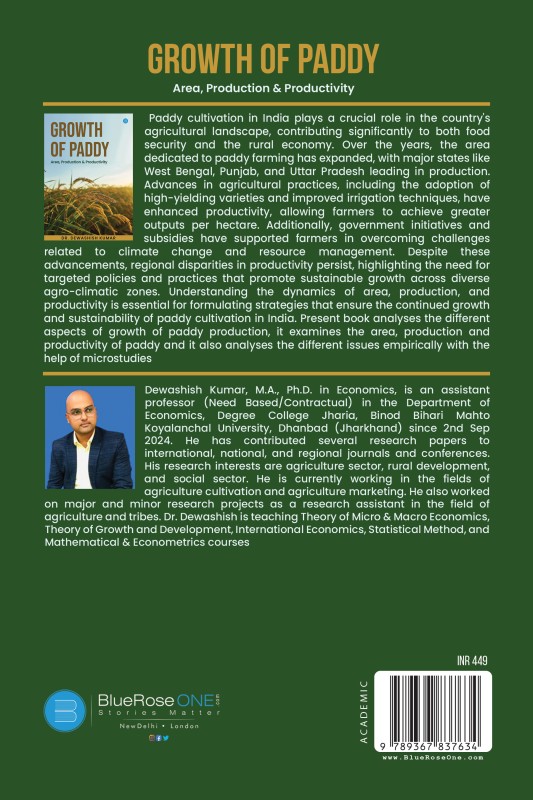Growth Of Paddy Area, Production & Productivity
by Dr. Dewashish Kumar | 06-Dec-2024
(0)
Paddy cultivation in India plays a crucial role in the country's agricultural landscape, contributing significantly to both food security and the rural economy. Over the years, the area dedicated to paddy farming has expanded, with major states li...
Original
Books
Fastest
Delivery
7-day
Replacement
Book Details
- Language : English
- Pages : 208
- ISBN : 9789367837634
- Genre: ACADEMIC
- Size : 6" x 9"
- Binding Type : PAPERBACK
- Age Group: + Years
- Paper Type : NATURAL SHADE
- Interior : BLACK & WHITE
- Cover : MATTE FINISH
- Book Type : EBOOK
- Tags : Paddy Cultivation,Agricultural Landscape,Food Security,Rural Economy,Area and Production,Productivity Enhancement,High-Yielding Varieties,Improved Irrigation Techniques,Government Initiatives,Subsidies for Farmers
-
Best Sellers Rank :
#1494 in Academics
#9348 in Global
Reviews
There are no reviews for this product yet.

 USD
($)
USD
($) AUD
($)
AUD
($) CAD
($)
CAD
($) EUR
(€)
EUR
(€) HKD
($)
HKD
($) MYR
(RM)
MYR
(RM) GBP
(£)
GBP
(£) SGD
($)
SGD
($)









